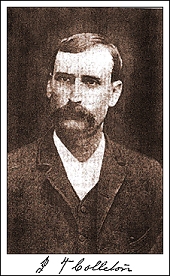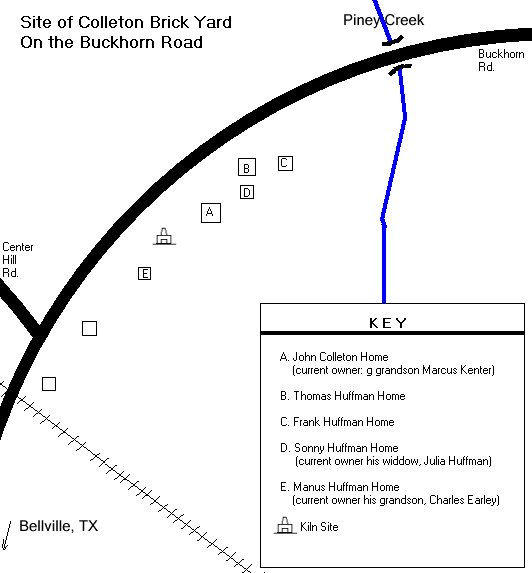

John Colleton and Brick-Making
By Torre DeVitoWhen I was a boy it was easy to see where the kiln had stood in the field between my uncle and my grandfather’s house. Broken brick and wooden molds could be found in the woods on what was once my ancestor’s property. I remember asking my grandfather, Manus Huffman, how the bricks were made. The following is what I have reconstructed from the notes that I made the evening after speaking with my grandfather over 29 years ago, when I was just 11 years old.
To make his bricks, Colleton first mixed the clay and the sand with water, using a shovel or a hoe. During the mixing process he would often reach into the mixture and take a clump in his hand to get the feel of the mixture. If it had no clumps and was moist throughout, then Colleton knew he had the right consistency. He would then cover the mixture, which he called " mud", with canvas. This would prevent the mud from drying too fast, and allow it to "cure" overnight.
The next morning the mixture would be ready. Each brick was hand-molded by throwing the prepared “mud” into wooden molds that held 3 to 5 bricks (depending on the size of the bricks). The bricks were allowed to dry a bit. They were then removed from the molds and spread out on the ground where they were frequently rotated to allow for even drying. When they were fairly hard, the brick were stacked until they were ready to be loaded into the kilns. Colleton could tell the bricks were ready to be fired by the sound of the bricks when they were hit together.
Once the kiln was loaded with uncooked bricks, the firing began. Colleton left the kiln top uncovered to allow any water trapped in the bricks to evaporate. When steam was no longer visible at the top of the kiln, he "closed" the kiln by covering it with a sheet of metal, which he then loaded with un-fired bricks and mud. The bricks were fired in the kiln for 2 days, which produced a high quality red brick. While Colleton fired one set of bricks he could mold another.
After he closed his brickyard in 1901, Colleton continued to build in the Bellville area. Four generations of brick masons have followed in Colleton's footsteps. These include Thomas Huffman (Colleton’s son in law and my great-grandfather), Manus, Frank, and Sonny Huffman (my grandfather and his brothers) and Francis Gale Huffman and his sons (my cousins). When it comes to brick, it can be said that Huffman’s and Colleton’s built Bellville. Descendants of John Colleton still own much of the land that was part of his original property, and though nothing remains of the old brickyard today, most of the original brick buildings around Bellville’s courthouse square are still standing. They are built with John Colleton’s bricks.
